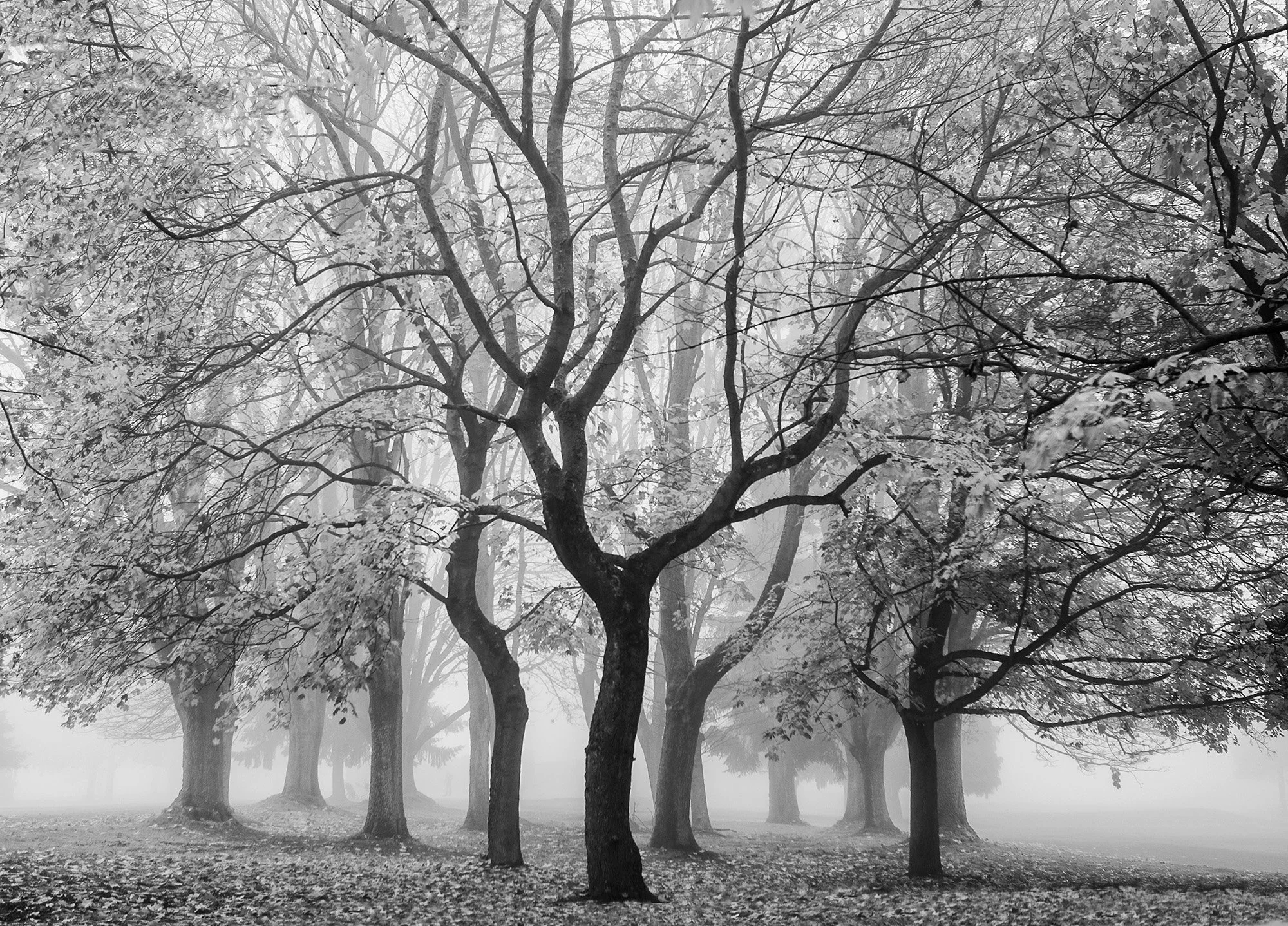AI Images, Part II
Seattle, November 2004
The above image was shot in a typical heavy fog in early November at one of the local golf courses. It was taken with a Canon 1D Mark II, an 8.2 megapixel camera rather small when compared to the quality of the sensors today. Along the way I upscaled the image, converted it to a black and white, which I think adds to the quality of the filtered light and perhaps sharpened it a little. I always liked this image, the way the lead tree stands as it its performance is done and is holding the final pose for the audience. Along the way, I submitted this image to Landscape Photography Magazine under their “Defused Light” challenge and was lucky enough to get a full page print of the image in the magazine.
Why do I bring this up? Over the last several days the manager and I have had a disagreement regarding an image chosen under the last challenge with me maintaining their was too much AI enhancement to the image. To prove my point I ran a copy of the image through Watson AI which produced a 70% likelihood that it was AI generated. The manager, to prove his point ran the image above through Watson AI and came up with essentially the same results as Craig Bills image. I found this rather astonishing as I had really not done much to the image to render it so. adversely by AI.
Puzzled, I first went to the staff of Watson to ask the question of how my image could be interpreted as so securely AI enhanced. With no really response I turned to ChatGPT for answers (I had begun using ChatGPT for medical purposes and had become quite impressed with the quality of its responses. This is essentially what Chat told me.
AI detectors rely on pattern analysis — not ground truth
WatsonAI and similar tools don't “see” like humans. They analyze statistical patterns in pixels, textures, noise, and compression artifacts. If an image has characteristics similar to those found in AI-generated content — even if it’s not — the tool might flag it.
Image processing can mimic AI-like traits
Even real photos can appear "synthetic" to these detectors after:
RAW to JPEG conversion (introduces compression and smoothing)
Noise reduction and sharpening
HDR merging or focus stacking
Content-aware fills or sky replacements (if used)
Editing in tools like Luminar, Photoshop, Topaz, etc. that use AI-powered enhancements
These processes often leave behind visual clues that AI detectors interpret as “machine-generated” patterns.
JPEG compression and resizing distort native camera signals
When you export an image to JPEG, especially for web or contest submission, you:
Remove metadata (EXIF)
Alter original sensor noise
Introduce block artifacts and color banding
All of these changes can “confuse” the classifier. A heavily compressed JPEG might look less natural than a synthetic image with added grain.
WatsonAI may not be trained on high-end digital camera data
These tools are often trained on:
Stock photos
Known AI images (e.g. Midjourney, DALL·E)
Social media images
Basic phone photos
If your Sony files are color-graded, corrected, or otherwise refined with professional software, they may look "too perfect" or stylized — another trigger for false positives.
AI detectors are probabilistic, not binary
Watson saying “70% AI” doesn’t mean 70% of the pixels were generated. It means the image overall has a 70% likelihood of being AI-generated, based on the patterns it has seen in training. That’s a subtle but crucial difference.
This was an eye opening process for me. Of course the mere copying of an image off of a web site and running through an AI program would generate false readings. Further, almost all of our current software advancement is predicated on AI models for Topaz, Luminary, DXO, Photoshop and Lightroom to do their thing. The more we have photo editing software that makes our life easier the more we enter the realm of AI automation. So where is the line?
What started this process was an image by Craig Bill. He does not have the exact image on his web site but one can see it by going to Landscape Photography Magazine/Assignment. It is an image of the Wave at Coyote Buttes, very dramatic and over processed into the realm of Marc Adamus. One can visit The Wave almost the exact same image, only in the daytime and not severely enhanced. Finally, I uploaded a copy of the image from The Wave and Craig Bills image for Chat’s take. Here is what it reported


